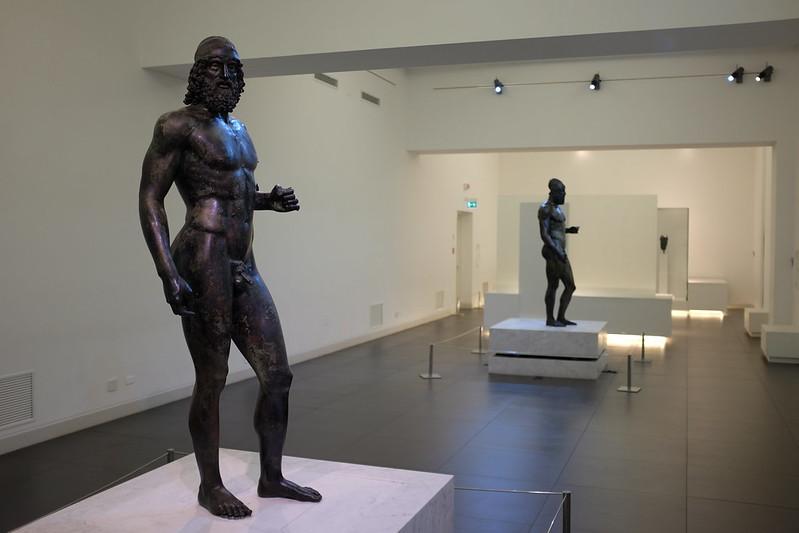Fifty years ago, a discovery rocked the archeological world and turned the little Calabrian town of Riace into a household name.
In 1972, a Roman tourist named Stefano Mariottini was scuba diving off the Calabrian coast near Riace when he swam upon two life-size statues. This accidental encounter uncovered statues that had been buried for thousands of years in the sea bed not far from Riace’s marina. They were appropriately named I Bronzi di Riace (the Bronzes of Riace).
Last Tuesday, August 16, 2022, marked the 50th anniversary of this historic recovery. A commemorative celebration took place in Riace with dignitaries on hand to underscore the importance of the Riace Bronzes to the territory and the world at large. In attendance at the event were Italy’s Culture Minister, Dario Franceschini, and the Governor of Calabria, Roberto Occhiuto, who said of the statues, "They are unique works of art and a symbol of Calabria."
After being plucked from the Ionian sea, the 2,000-year-old bronze statues were transported to the Museum of Reggio for initial rehabilitation work. In 1975, the two bronzes were moved again, this time to Florence, where famed restorers Renzo Giachetti and Edilberto Formigli took over. After a year of cleaning, the statues underwent an extensive restoration process that lasted five years. They were finally returned home to Reggio Calabria in 1981.
Referred to simply as “A” and “B”, the massive bronze statues — each stands two meters tall — date to the 5th century BCE. Initially thought to be representations of Greek warriors, Statue B (430 BCE) has been attributed to the sculpture Polyclitus, while Statue “A” is believed to be a rare surviving work by Phidias — an Athenian sculptor whose Statue of Zeus at Olympia is considered one of the Seven Ancient Wonders of the World.
There are several theories about the origins of the bronzes. Some experts believe the statues came from the Temple of Apollo (Delphi) in Athens. Others have debated whether the statues depict athletes, heroes or deities. Based on the iconography of the Greek world — only deities and heroes were portrayed naked, while mere mortals had to be shown wearing clothes or armor — most scientists have ruled out the sportsmen theory.
Whomever they were modeled after, a half-century later the Bronzi di Riace continue to be an emblem of Italy’s immense historical and archeological heritage. Recently, they were nominated for consideration by the UNESCO committee.
To meet the auspicious duo in person, visit the National Archaeological Museum of Reggio Calabria (formerly known as the National Museum of Magna Grecia). The two treasures are part of an impressive collection of artifacts from ancient Rhegion — the site of the Greek city on which Riace now sits.
If you go
Museo Archeologico Nazionale di Reggio Calabria
Piazza de Nava 26
Tel: +39 0965 617 612
To learn more, check out the recently-launched website dedicated to the Bronzes of Riace.









